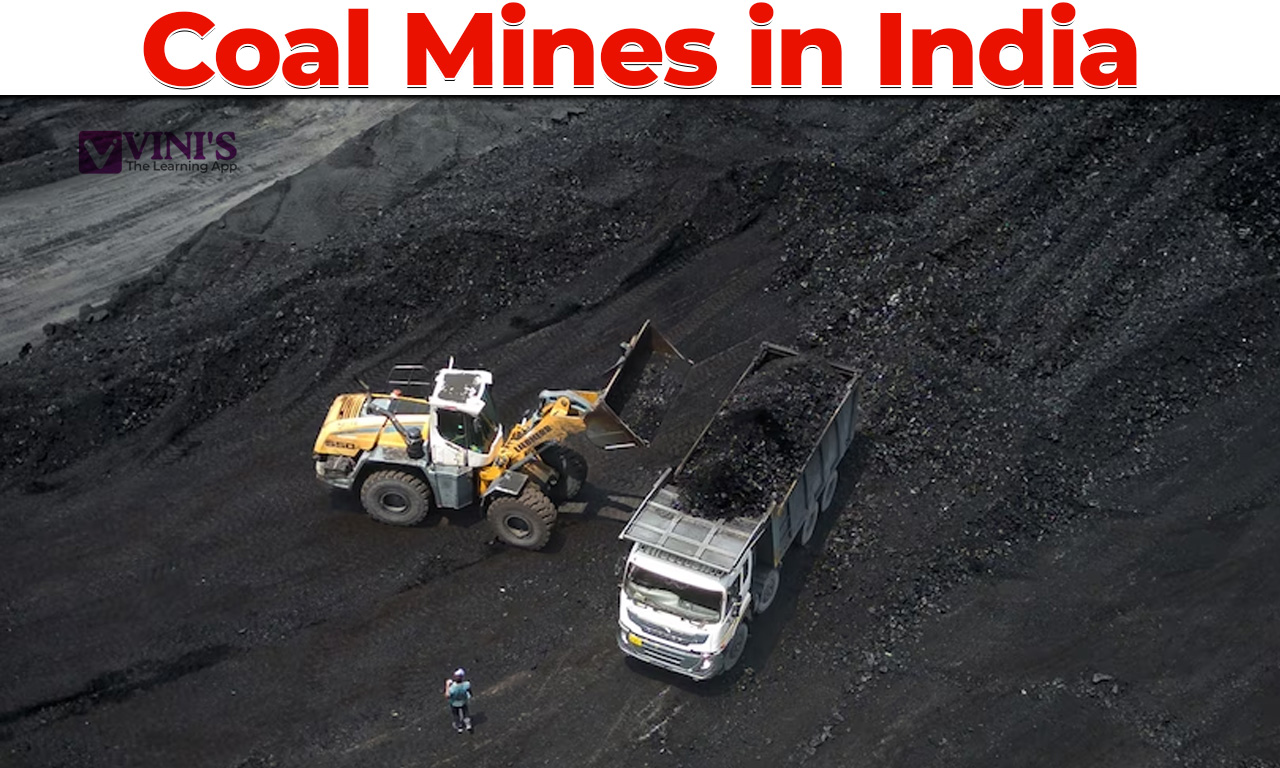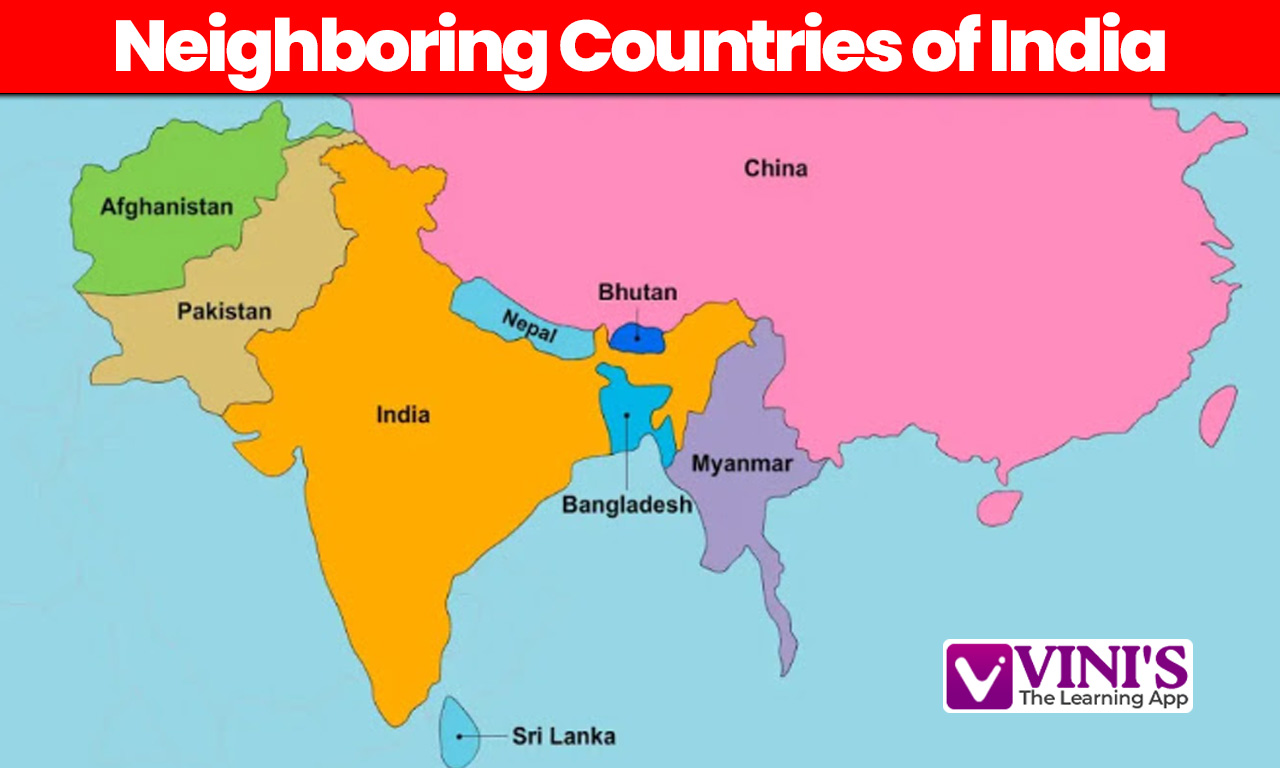Coal Mines in India:- Coal mining refers to the process of extracting coal deposits from the Earth’s surface and underground. As coal was a key energy source that powered the Industrial Revolution, its demand surged, leading to extensive extraction activities. By the late 20th century, open-pit mining replaced underground methods as the primary source of coal in industrialized nations.
With technological advancements, coal mining today has become a highly efficient and mechanised operation, both on the surface and underground. In India, the country’s first coalfield, Raniganj, began mining operations under the East India Company in 1774. Given India’s rich ancient rock formations, it serves as a major reserve for various mineral resources, including coal. Get the list of the Coal Mines in India from the table below.
Table of Contents
ToggleCoal Mines in India
Check out the list of Coal Mines in India from the below table. Also, learn about the Important Dams in India.
| Coal Mines in India | States | Features/Prominence |
| Jharia, Dhanbad, Bokaro, Jayanti, Godda, Giridih (Karbhari Coal Field), Ramgarh, Karanpura, Daltonganj | Jharkhand | Dhanbad – Among the oldest and wealthiest coalfields in India, known for high-quality coking coal used in steel production. Giridih is notable for producing premium coking coal. |
| Raniganj Coalfield, Dalingkot (Darjeeling), Birbhum, Chinakuri | West Bengal | Darjeeling and Jalpaiguri are major coal-producing areas, with Raniganj being India’s first coalfield. Known for thermal coal production. |
| Korba, Bishrampur, Sonhat, Jhilmil, Hasdo-Arand | Chhattisgarh | Known for extensive coal reserves, these mines contribute significantly to India’s thermal power generation. |
| Jharsuguda, Himgiri, Rampur, Talcher | Odisha | Talcher has the second-largest coal reserves in India and supplies coal for steam and thermal power plants. |
| Singareni, Kothagudem, Kantapalli | Telangana/Andhra Pradesh | Coal reserves are concentrated in the Godavari valley, producing non-coking coal primarily used in power generation. |
| Neyveli | Tamil Nadu | This mine is known for lignite coal production, used mainly in thermal power generation. |
| Kamptee (Nagpur), Wun field, Wardha, Walarpur, Ghughus, Warora | Maharashtra | Significant contributor to the energy sector, these mines produce coal mainly for thermal power and industrial use. |
| Ledo, Makum, Najira, Janji, Jaipur | Assam | Assam’s coal is low in ash with high coking properties, ideal for metallurgical purposes and liquefaction processes. |
| Darrangiri (Garo hills), Cherrapunji, Liotryngew, Maolong, Langrin coalfields (Khasi & Jaintia Hills) | Meghalaya | Known for producing coal from tertiary deposits, these mines supply coal for both domestic and industrial uses. |
| Singrauli, Sohagpur, Johila, Umaria, Satpura coalfield | Madhya Pradesh | Singrauli is the largest coalfield in Madhya Pradesh, essential for supplying coal to power plants and industries. |
Coal Mines in India: Interesting Fact
Coal mines in India play a crucial role in fueling the country’s energy and industrial needs. India is home to vast coal reserves, making it one of the largest coal producers in the world. Here are some interesting facts about coal mines in India:
- First Coal Mine: The very first coal mining operation in India began in 1774 at the Raniganj coalfield, under the East India Company. This coal mine marked the start of organized coal mining in the country.
- Rich Reserves: India is rich in coal reserves, particularly in regions like Jharkhand, Odisha, West Bengal, Chhattisgarh, and Madhya Pradesh. These states house some of the most significant coal mines in India, including Jharia, Dhanbad, and Talcher.
- Types of Coal: India’s coal mines extract different types of coal, including coking coal, used for steel production, and non-coking coal, primarily used for electricity generation in thermal power plants.
- Gondwana Coalfields: Most of India’s coal reserves come from the ancient Gondwana period. These coalfields, found in states like Jharkhand, Chhattisgarh, and Odisha, contain high-quality coal.
- Largest Coalfield: Jharia in Jharkhand is one of the largest coal mines in India, known for its high-quality coking coal, which is essential for the steel industry.
- Surface vs. Underground Mining: In the 20th century, open-pit mining, which extracts coal from the surface, became more prevalent than underground mining due to its higher efficiency and safety.
- Coal Mining Today: With technological advancements, coal mines in India are now highly mechanized, allowing for more efficient extraction of both surface and underground deposits.













